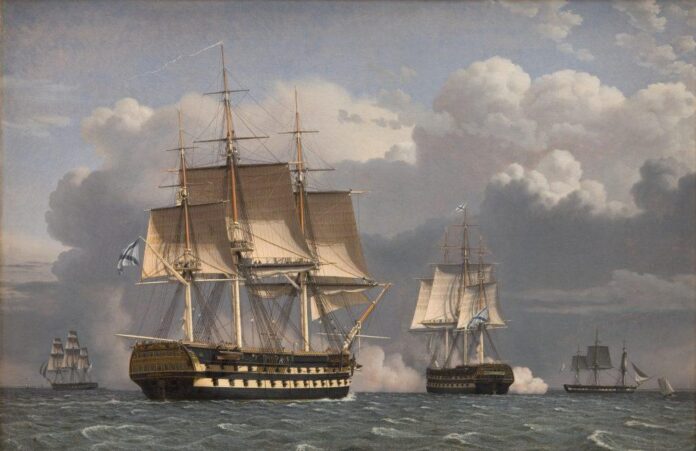The Danish Golden Age just got a bit more golden, thanks to a team of experts who inadvertently corroborated, for the first time, that the era’s artists used beer to prime canvases.
Researchers at the Danish National Gallery used mass spectrometry-based proteomics to measure the weights of various proteins on the surface of works by Golden Age artist Christoffer Wilhelm Eckersberg and his protege Christen Schiellerup Købke. They identified cereal and yeast proteins including barley, buckwheat, wheat, and rye on seven of the works. The team ruled out environmental contamination, suggesting that the proteins were applied on purpose.
The team, which set out to search for animal glue, published their study In It ill inform conservation tactics and recast artworks as “historical molecular records.” (It could even help identify forgeries.)

Another painting from the study: CW Eckersberg, A Russian Fleet at Anchor near Elsinore, 1826. Photo by Heritage Art/Heritage Images via Getty Images.
One of the researchers, Fabiana Di Gianvincenzo, told Artnet News that the seven works that tested positive for cereal and yeast proteins were also the sample’s earliest, produced while both artists were affiliated with the Royal Danish Academy of Fine Arts—which would have provided the materials, including primed canvases.
“This suggests that this recipe was used in the workshops of the Academy of Fine Arts itself,” she said. The proteins found here all factor into alcohol production, and displayed consistent degradation—meaning the Danes were likely recycling brewery byproducts.
But artists working today shouldn’t necessarily follow their lead.
“The original Danish Golden Age recipe can definitely not be recommended as it contained lead from the lead white pigment,” another researcher, Cecil Krarup Andersen, told Artnet News. “However, if one could find an organic pigment that would mix well with yeast from beer and drying oil, it is definitely a technique that is still useful.”

























